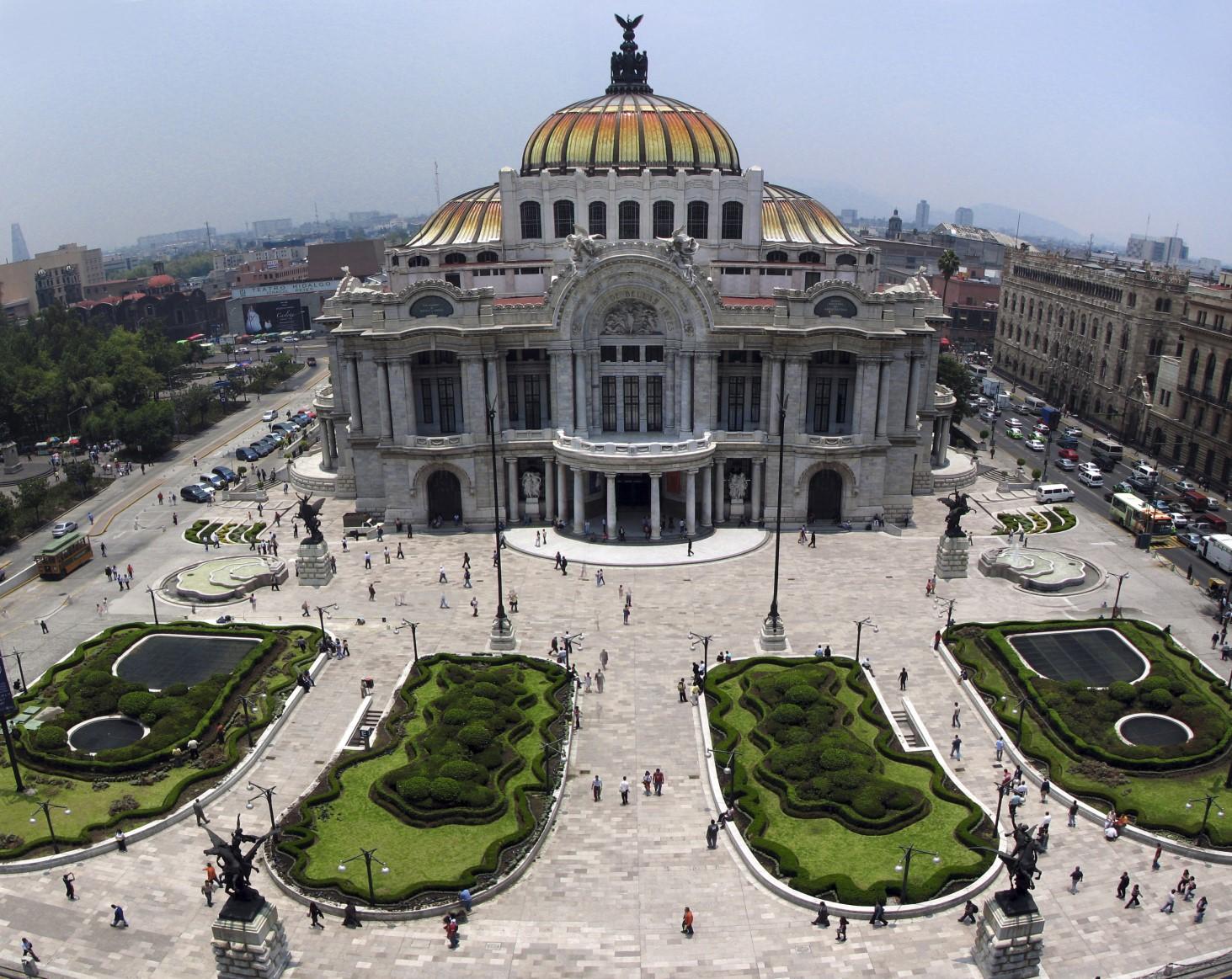
16 minute read
How do I find out?
What breed of dog it that? How do I find out?
by Señior Tech
Advertisement
Do you remember a time when you needed to go to a library
or reference book to get information? When my wife and I got
our first iPhones, I would tease her and say “if only there was a way to find out”, then checked Google and did a search. That
was over ten years ago.
Google has a tool on their Google Browser (not Chrome) for
both iOS and Android phones and tablets. It has been availa-
ble for over two years and it has one big advantage over the
text search. The phone’s camera becomes the input device.
The Google app is available on the Apple App Store for iOS
devices and Google Play App Store for Android devices. Once
the app is installed, click on the icon (see the graphic on the
left, the arrow points to Google lens).
Google lens opens your camera. Find an item you want identi-
fied and click the camera shutter button. A number of links will be displayed below. You can even
choose your category before you do your photo or search.
Click on one of the links that satisfies your search request and
you are done. In this case, I had taken a photo of a magazine
cover, but you can have it identify anything your camera is fo-
cused on.
If you are travelling (I wish) in a foreign country and
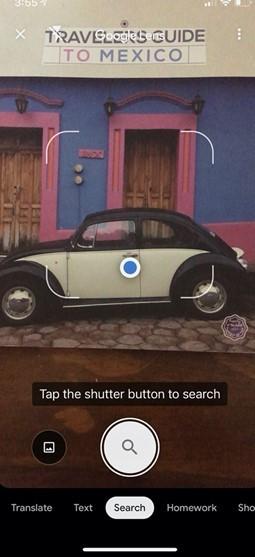

a sign has information you do not understand, use Google
lens. It will do the translation for you. If you see a dog and
you want to know the breed, use Google lens.
Google lens is a free app. I recommend it to anyone who
wants information from a search engine but may not know
how to describe what they are seeing. For more information,
visit Google Lens.
If you have questions or suggestions about technology top-
San Carlos - Guaymas
by Dan and Lisa Goy
Totonaka RV Park (San Carlos) & Hotel Playa de Cortés (Guaymas)
Baja Amigos RV tours have relied on both the Totonaka RV Park and the RV park located at the Hotel Playa de Cortés for many years, although they are two very different places, only 30 minutes apart in the State of Sonora.
Totonaka RV Park (GPS 27.96331 N, 111.02450 W)
www.Totonakarv.com Founded in 1983, we first stumbled onto this park on a family vacation in 2002 heading for Acapulco and Mexico City. Our family of five was traveling in a Ford “Club Chateau” with Captain Chairs and a fold down bench seat bed combination. We slept in the van, the kids in a tent. It was our first overnight stop in this Mexican adventure.
We now stay here on a regular basis both with our tours and when we travel personally. This is a large RV park in Mexican terms and well run, with 140 camping spaces with 30A RV plugs. It has most of the bells and whistles including a pool, pickle ball court, laundry, great Wi-Fi, cable, is pet friendly and offers much more. Los Arbolitos restaurant is at the entrance of the park and we have eaten there many times. This park is a very popular snowbird destination and nearly full each January and February.
The major attraction for most is no need for a vehicle permit (plus a $400 USD deposit) to visit either San Carlos or Guaymas, but no further south. The weather is similar to Tucson, AZ, a little cooler during the day, a bit warmer at night and you are on the ocean. The monthly camping fees are also substantially less ($300-$400) compared to those in the US. Best of all, you are in Mexico!
Hotel Playa de Cortés Trailer Park (GPS 21.91225 N,
110.94506 W) www.hotelesgandara.com.mx Our first time at this location was in April 2016 as we completed our 90-day Mexican Adventure and were heading back to the US. This a wonderful spot to spend a couple of nights for a good night’s sleep and some R&R. Rarely are there more than a handful of RVs here. The RV park is behind the hotel, about 50 spaces, that include full services with 30A; the bonus is access to the hotel and amenities. Hotel Playa de Cortés sits on the beautiful Bay of Bacochibampo.
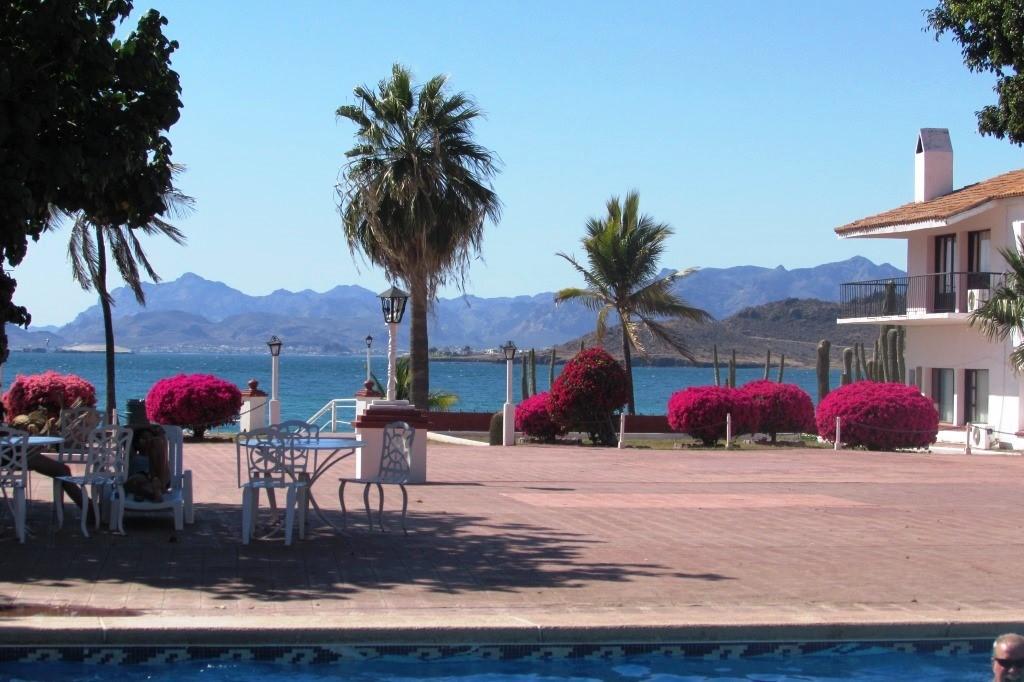
Hotel Playa de Cortés
This traditional and historic hotel was founded in 1936. In the past it has hosted famous folks such as María Félix, Ray Conniff and Liza Minelli. This is also a very popular location for wedding receptions. Almost every weekend is booked throughout the year. Our groups now stay here at the end of tour and we host a farewell dinner at the hotel restaurant, always great food! Folks have the opportunity for some pool time and to catch up on tasks with Wi-Fi. This stop is also popular for folks heading to Baja. The ferry from Guaymas travels to Santa Rosalía across the Sea of Cortés, an hour north of the Bay of Concepción.
Guaymas
Guaymas is 134 km south of the state capital of Hermosillo, and 389 kilometres (242 mi) from the US border, located on the Gulf of California and the western edge of the Sonoran Desert. The city's formal name is the Heróica Ciudad de Guaymas and this is a mostly known as an industrial port and is the principal port for the state of Sonora.
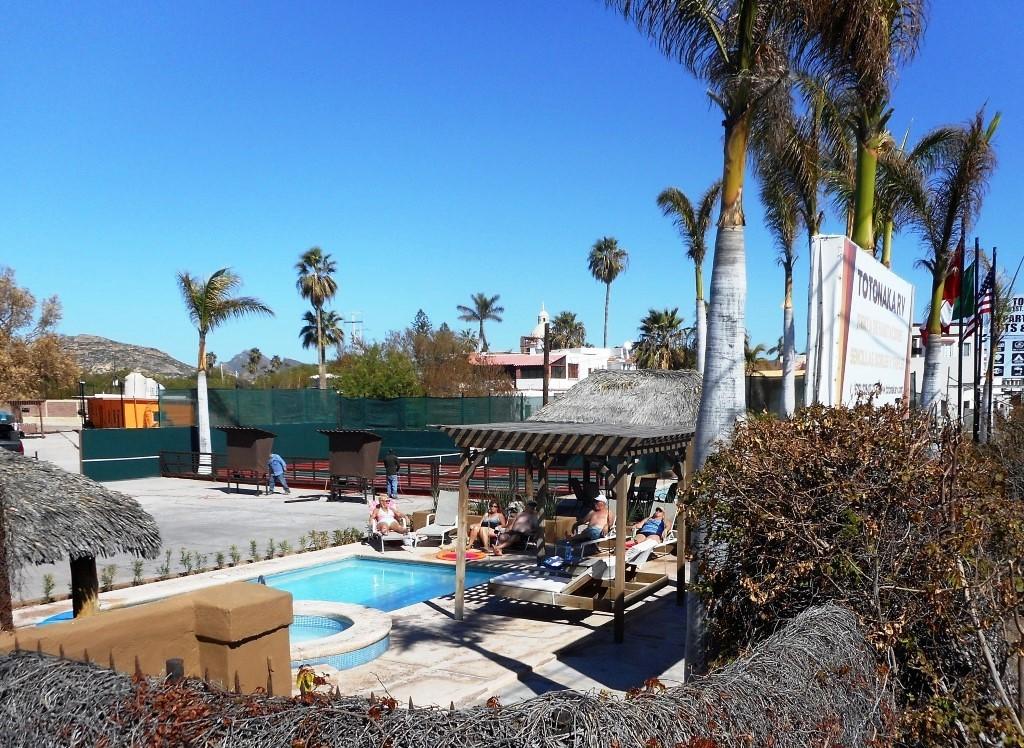
...San Carlos - Guaymas
History
Prior to Spanish arrival, the area now known as Guaymas was dominated by the Guaymas, Seri and Yaqui tribes. In 1539, two Spanish ships, the Santa Agueda and El Trinidad arrived in Guaymas Bay and were commanded by Francisco de Ulloa who called the area "the port of ports." Some small Jesuit missions in the area were founded in the 1610s and 1620s, when Jesuits founded eight mission villages with the Yaqui. The Seri strongly opposed the settlement of Europeans and resisted fiercely until 1769.
Juan María de Salvatierra and Eusebio Kino began the process to evangelize the area in 1697. In 1701, Salvatierra came to this area and established the Loreto mission somewhat inland from where Guaymas is now and the Jesuits founded another small mission on the bay which they called San José de Guaymas, headed by Manuel Diaz. The Seri repeatedly attacked the San José mission, forcing it to be abandoned and rebuilt several times, abandoned for the final time in 1759.
In 1767, Viceroy Marqués de Croix ordered a major military offensive referred to as “the Sonora Expedition”. The objective was to subdue the Seri and Pima tribes. Later, the Spanish colonials built an adobe fort, with four towers, in Guaymas, initially under the command of Captain Lorenzo Cancio. No traces of the fort remain today, but the San José Mission is marked by a church located on the road leading to Empalme. Around the same time, the colonists formally mapped the Guaymas Bay and officially founded the city of Guaymas in 1769 by José Gálvez in Real de Alamos on behalf of the viceregal government. It was another 40 years before any colonists settled.
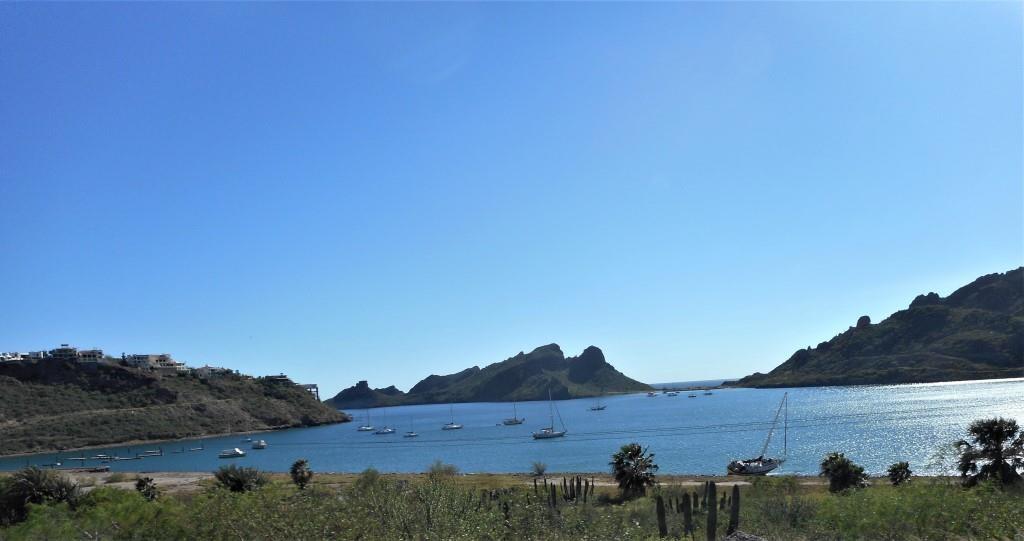
Calm waters in San Carlos
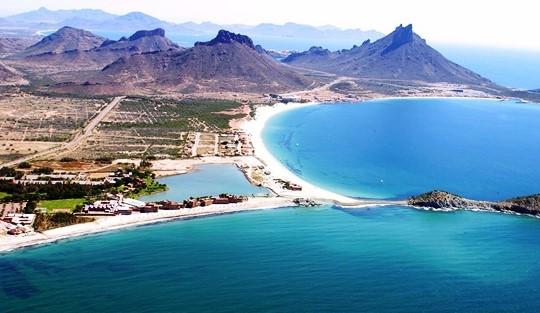
San Carlos (foreground) Guaymas Harbour
In the late 18th and early 19th century, there was supposedly only one inhabitant in Guaymas, called “Tio Pepe” (Uncle Pepe), who was said to be a drunk and a thief. At the beginning of the 19th century, the village began to be populated by farmers and ranchers who held large properties but did not have markets for their products. In 1811, commercial maritime traffic was authorized and customs was established later in 1823. Guaymas received the name San Fernando de Guaymas in 1820. Ships visited the bay intermittently. Important to understand in this era, it was safer to travel by sea than by land; Guaymas became an important stopping point for those heading north or south and the first commercial imports opened in 1827. Much of the population at this time consisted of European-Mexicans who eventually moved to a town called Belén and disappeared as a distinct group.
The port became a municipality in 1825 and during the Mexican-American War, American warships such as the Portsmouth, the Congress, the Dale and the Argos anchored here near the Pájaros Island and the Almagre Grande. The ships fired on the town and captured it, keeping it in US hands from 1847 to 1848. In the mid-19th century, Guaymas was the target of several filibusters, or unauthorized military expeditions from foreign nations, designed to foment rebellion.

San Carlos waterfront
One was done by the crew of the English sailing vessel “Challenge” and a French ship named La Belle commanded by Count Gastón Raousett-Boulbón, who intended to take over all of Sonora.
...San Carlos - Guaymas

The French attacked the city on 13 July 1854, but the port was successfully defended by José María Yáñez and a firing squad executed the Count. The national government elevated the town to city status as a reward for this action in 1859 and decades later, in 1935, gave Guaymas the title of “heroic city” for the same action. The municipality's formal name of Guaymas de Zaragoza was authorized in 1862 and, in 1865, French ships arrived to attack Republican forces, which were forced to retreat. The French occupied the city until 1866.
By 1890, the city had 10,000 residents and was somewhat prosperous. The carnival tradition it established then continues to this day. On October 4-5, 1911, Guaymas was struck by a major hurricane and accompanying storm surge, which killed some 500 people in the city and environs.
During the Mexican Revolution (1910-1920), the first ever aerial bombardment of a naval target occurred just off the coast of Guaymas. In 1913, five military ships belonging to Federal forces appeared in the bay, and General Álvaro Obregón of the rebel army ordered the bombing of these ships using the aircraft “Sonora.” The first modern port facilities were built in 1925 for the Mexican navy.
In 1942, a commercial pier and warehouse were built at La Ardilla. Guaymas’ importance as a port grew in the 1950s and, in 1961, a pier for the national oil company PEMEX was built. A naval ship repair station, called the Varadero Nacional, and silos for the export of grain, called the Almacenes Nacional de Depósito, were built in 1964.
Ferry connection with the city of Santa Rosalía, Baja California Sur, was established in 1972. In the 1980s, a number of private construction projects further enlarged the port, including those built by the Compañía Mexicana de Cobre, Cementos Tolteca and Compañía Mexicana de Ácido Sulfúrico. Due to changes in Mexican maritime law, a private company under contract to the government, Administración Portuaria Integral de Guaymas, took over port operations in 1995.
Guaymas Today
Guaymas is basically an industrial and shrimp-fishing port which has conserved a number of historical attractions. Buildings in the historic center have a mix of Neoclassical and Moorish facades, however many are in disrepair. The city has two main plazas, one called 13 de Julio, which is nicknamed the “plaza de los flojos” (lazy men's plaza) for the large number of people who relax there.
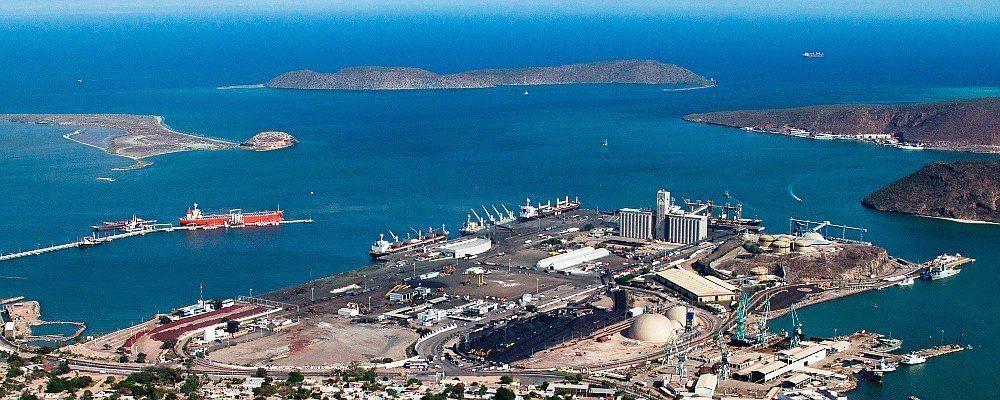
Puerto de Guaymas
The other major plaza is the Plaza de los Tres Presidentes with statues of Plutarco Elías Calles, Adolfo de la Huerta and Abelardo L. Rodríguez all of whom are from near Guaymas. Other landmarks include the old Bank of Sonora building with its Neoclassical facade, the old jailhouse built in 1900, the Casa de las Conchas (House of Shells), which has a large collection on display and for sale, and the Casa de la Cultura (Cultural Center), which offers classes and workshops in various arts.
Carnival of Guaymas
Guaymas holds one of Mexico's major carnival celebrations. It is one of the oldest carnivals in the country. The annual event begins on the Thursday before Ash Wednesday and ends at the stroke of midnight of the beginning of Lent. Events are held in several locations with a number of events, such as the yearly parade, extending over multiple days. It begins with the Quema del Malhumor or Hoguera, when an effigy of something or someone who has displeased the public is burned.
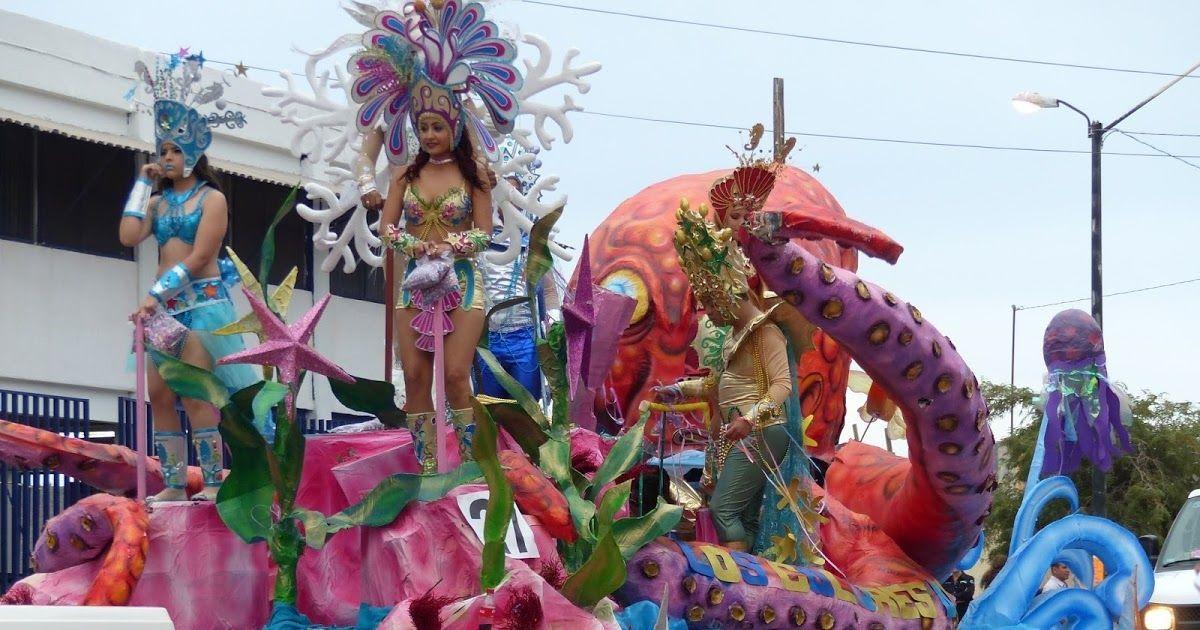
...San Carlos - Guaymas
Each year, the effigy represents something different. In past years, the effigy has represented the figures of Carlos Salinas de Gortari, Vicente Fox, George H. W. Bush, Mexico's value added tax and lack of water. Carlos is about a six-hour drive from the United States along Mexican interstate Highway 15. San Carlos boasts a very large and active diving community and is the sailing capital of Sonora with a large yacht club.
In 2009, the effigy was of singer Julio Preciado for his poor interpretation of Mexico's national anthem at the recent Serie del Caribe baseball tournament. Other major events include concerts by regionally and nationally known artists, a multi-day parade with floats and the election of the King and Queen of the Carnival. The history of Carnival in Guaymas begins after the Reform War and French Intervention in Mexico, when Guaymas and the rest of the country experienced a period of peace and economic development. The success of Guaymas’ port attracted a number of European immigrants and visitors.
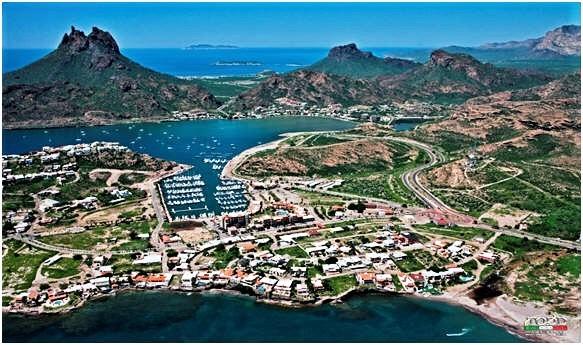
San Carlos view of the harbour
They brought the idea of organizing a Carnival similar to those celebrated in Europe. Guaymas’ first carnival is recorded in a book called El Viejo Guaymas (Old Guaymas) written by Alfonso Iberri. It was one of the first to take place in Mexico.
In 1888, the first Carnival Queen was María Zuber and the first King was Alfredo Díaz Velasco. The King and Queen were paraded on the streets of Guaymas in a coach, followed by coaches carrying their entourage. The event ended with a grand ball that night.
San Carlos
San Carlos is a beachfront subdivision within the port city of Guaymas, constructed specifically for tourists to promote tourism. Noted for clear waters and shallow bays San Carlos has grown to nearly 7,000 residents, and includes numerous RV parks, resorts and stores. There are also many Americans and Canadians who live in San Carlos during the winter as the summer months are very hot and humid, much like in Texas. San
History of San Carlos
The community of San Carlos was founded on lands that previously were a large cattle ranch known as the Baviso de Navarro. This was later subdivided in four great estates known as Rancho Los Algodones, Rancho San Carlos, Rancho El Baviso and Rancho El Represo. In the mid-1950s, Mr. Rafael T. Caballero acquired the ranches Los Algodones, San Carlos and El Baviso, contracting the services of city planners who designed the first stages of a gradual and carefully planned tourist development that in time would become one of the first and most important tourist and recreational communities in the State.
When the private investors began the initial works for this development, the State Congress of Sonora issued a declaration establishing the official incorporation of the Township of San Carlos, Nuevo Guaymas, Municipality of Guaymas, Sonora, Mexico. The decree published on 28 September 1963, had an endowment of 27.75 km² of privately owned lands located in the Southern portion of the estate Ranch El Baviso. To complement the Township Land Endowment, the State Congress increased the Legal Land Fund by adding the estates known as Rancho San Carlos and Rancho Los Algodones, both with a surface of 22.04 km², as published in the Official State Bulletin no. 23, on 21 March 1973. A total of 49.79 km² of privately owned lands constitute the territorial reserves of this development.
On 1 July 1976, the Agrarian Reform Secretariat, through the Director of Legal Affairs, declared that the privately owned lands located in the remaining lands of the estates El Baviso and San Carlos, have no agrarian legal claims upon them, and consequently the proprietors are free to lien, to encumber, to contribute to societies, to merge, to cede on trusteeship and to freely dispose of these lands. In that same official notice, it is recognized that the proprietors of these four estates voluntarily ceded to the Federal Government part of their lands for the creation of the new center of population and for the formation of the Ejido 13 July, affecting the northern and the western portions of the estates of San Carlos, El Baviso, Los Algodones and El Represo. In 1980, the Agrarian Reform Secretariat, the Secretary of Human Settlements and Public Works, and the Secretary of Tourism, altogether issued a declaration of HighPriority Tourist Zoning; in favor of the estates El Baviso, San Carlos and Los Algodones, owned by Grupo Caballero.
Submitted by Dan and Lisa Goy Baja Amigos RV Caravan Tours www.BajaAmigos.net
...San Carlos - Guaymas
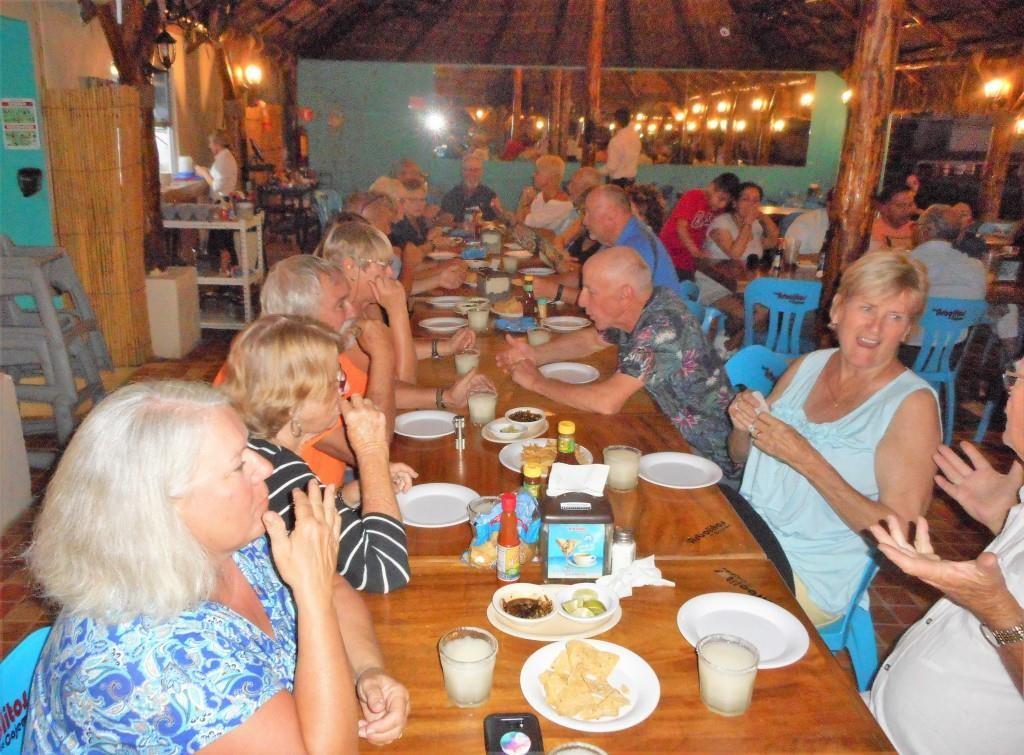
Baja Amigos group dinner at Los Arbolitos Gary enjoys his octopus at Los Arbolitos


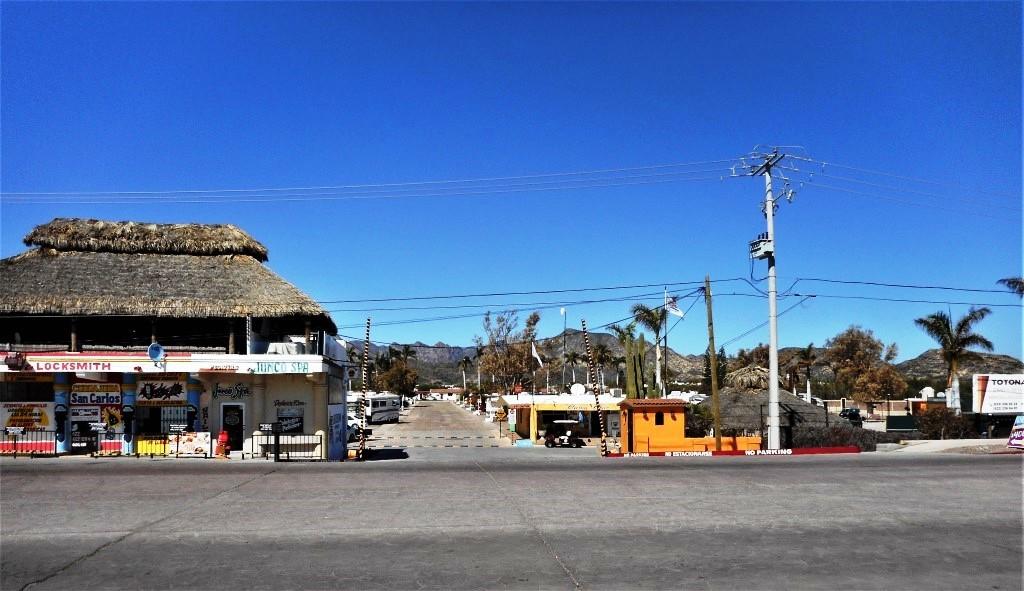
Parked at Totonaka RV Park Totonaka RV Park entrance

Totonaka RV Park entrance signage 1946 antique trailer at Totonaka

...San Carlos - Guaymas

Totonaka RV Park with the mountains in the background
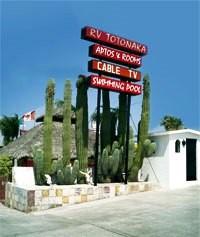

The gang prior to departing Totonaka RV Park
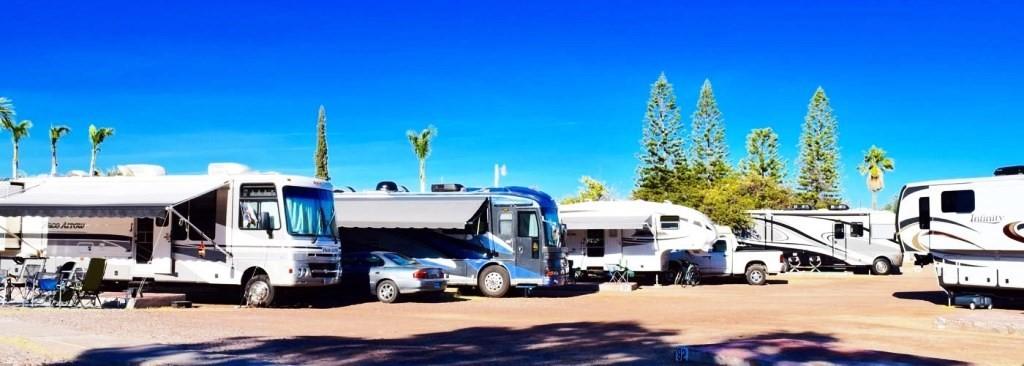
The rigs at Totonaka RV Park
...San Carlos - Guaymas

Beachfront, Hotel Playa de Cortés The gals on watch, Hotel Playa de Cortés

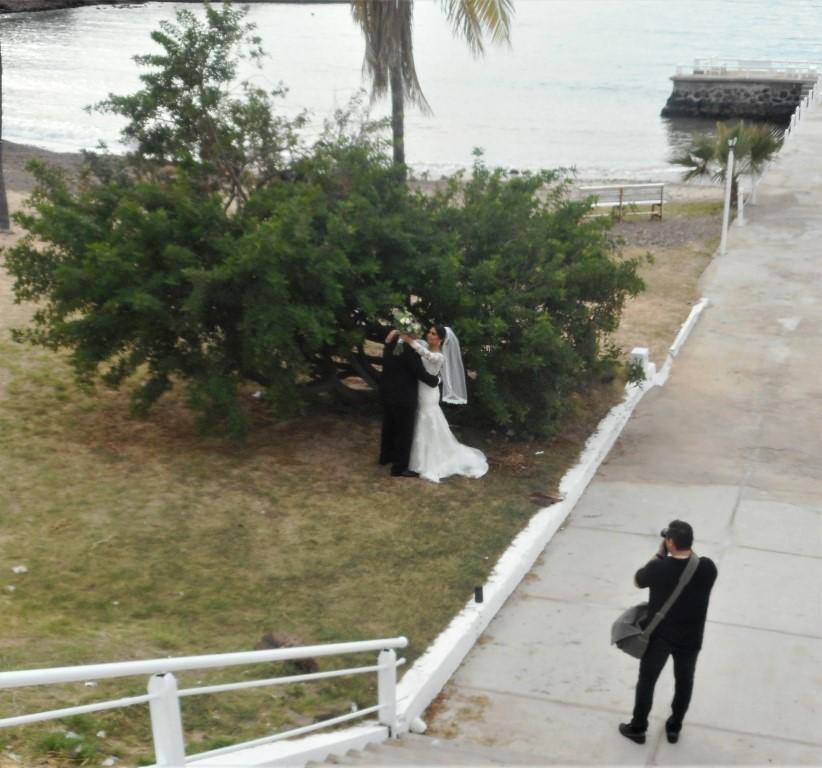
Bride and groom, Hotel Playa de Cortés Wedding reception flowers at Hotel Playa de Cortés


Happy hour at the Hotel Playa de Cortés Departing Hotel Playa de Cortés






